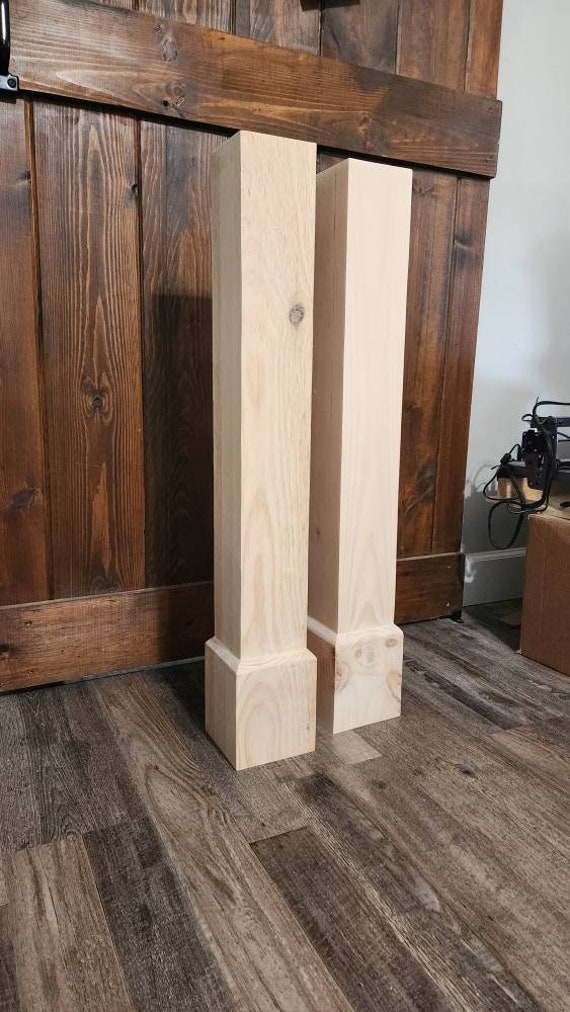A Comprehensive Overview to Choosing the Right Kitchen Island Leg
A Comprehensive Overview to Choosing the Right Kitchen Island Leg
Blog Article
The Value of a Sturdy Cooking Area Island Leg in Creating a Useful Cooking Area
A strong cooking area island leg serves as a basic element in establishing a useful cooking setting, providing needed support for both the counter top and different kitchen tasks. As kitchens advance into multifunctional locations for cooking, eating, and mingling, the option of products and layout factors to consider for island legs becomes progressively important.
Advantages of Sturdy Island Legs
Offering vital assistance, durable kitchen island legs play an essential duty in enhancing the functionality and durability of kitchen area islands - kitchen island leg. These legs not just bear the weight of the countertop and any added things put on the island, but also add to the total stability of the structure. A well-supported kitchen island makes certain that it remains useful and upright, even under hefty use, which is particularly crucial in busy kitchen atmospheres
Furthermore, durable island legs can improve the aesthetic appeal of the kitchen area. They supply a solid structure that can enhance various design styles, from contemporary to traditional. This flexibility permits home owners to tailor their cooking area islands according to individual taste while making certain that the structural stability continues to be uncompromised.
In enhancement to their encouraging function, durable kitchen area island legs can also improve security. Eventually, spending in durable kitchen island legs is vital for a functional and aesthetically pleasing cooking location.
Products for Kitchen Island Legs
When picking products for kitchen island legs, toughness and visual charm are crucial factors to consider. The most common materials include hardwood, metal, and crafted timber, each offering distinct advantages.
Hardwood, such as cherry, oak, or maple, is a traditional selection due to its strength and classic beauty (kitchen island leg). It can stand up to significant weight and is resistant to wear, making it perfect for high-use cooking area atmospheres. Furthermore, wood can be stained or repainted to match various kitchen area designs
Metal legs, commonly crafted from stainless-steel or wrought iron, supply a modern-day and commercial look. They are incredibly solid and can sustain significant tons while being immune to dampness and heat, which is useful in a cooking area. Steel legs can also be quickly cleansed, enhancing their functionality.

Layout Factors To Consider for Security
The selection of products for cooking area island legs directly affects the style factors to consider for security. When designing a cooking area island, it is extremely important to examine the weight-bearing capacity of the selected products. Larger materials, such as solid wood or steel, usually supply higher stability, specifically under the anxiety of daily use.
In addition, the leg design need to incorporate appropriate geometry to boost security. A wider base boosts the assistance area, decreasing the risk of wobbling or tipping. Factor to consider ought to also be offered to the height of the legs; out of proportion leg sizes can result in imbalance, compromising the general stability of the island.
Additionally, the distribution of weight throughout the island is essential. Guaranteeing that the leg positioning straightens with the heaviest components, such as countertops and appliances, will even more enhance stability.
Maintenance Tips for Durability

Cleaning is one more vital aspect of maintenance. Relying on the material of the legs-- whether timber, steel, or composite-- appropriate cleansing methods must be used. For wooden legs, a gentle clean with a moist fabric and a suitable wood cleaner will help protect their surface. Steel legs may require a light polish to avoid corrosion and keep their radiance.
In addition, tightening screws and screws consistently can ensure stability and avoid wobbling. Take into consideration enhancing the legs with added brackets or supports to boost durability if the kitchen island experiences hefty usage. Applying a safety surface or sealant can safeguard versus wetness and stains, prolonging the life-span of the legs. By adhering to these maintenance suggestions, property owners can guarantee their cooking area island legs continue to be durable and useful for years to come.
Picking the Right Leg Design
Routine upkeep makes sure that kitchen island legs continue to be practical and strong, yet picking the right leg design is similarly crucial for both aesthetic appeals and assistance. The selection of leg style can dramatically influence the overall design and harmony of your kitchen.

Functionality is one more essential element. Thicker legs or those with a sturdy base can support much heavier counter tops and devices, improving the island's energy. Conversely, slim legs may produce a ventilated appearance, suitable for lighter styles however potentially less helpful.
Verdict
In summary, the importance of tough kitchen island legs can not be overemphasized in the production of a functional food preparation area. These legs offer necessary assistance, improve security, and contribute to the general aesthetic of the kitchen area.
A tough cooking area island leg offers as a fundamental component in establishing a functional cooking environment, supplying required assistance for both the countertop and various kitchen area tasks.Giving vital support, durable kitchen island legs use this link play a pivotal duty in enhancing the performance and sturdiness of kitchen islands. Ultimately, spending in durable kitchen area island legs is vital for a useful and visually pleasing cooking area.
Consideration ought to also be offered to the elevation of the legs; disproportionate leg sizes can lead to imbalance, jeopardizing the total stability of the island.
Wooden legs give warmth and a traditional appearance, while steel legs offer a contemporary and commercial feel.
Report this page